How to Scald High Lipase Breast Milk
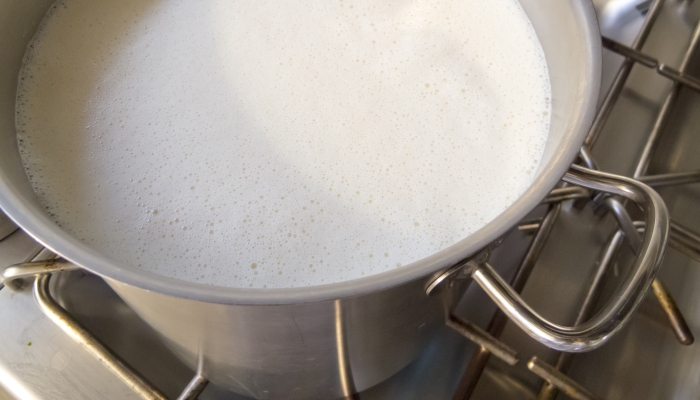
- Lipase is a natural enzyme found in breast milk that helps your baby digest and break down milk fats found in your breast milk.
- Expressed breast milk with high lipase can cause the milk to have a soapy smell or taste.
- Some babies don’t mind the taste of excess lipase breast milk, while others will refuse expressed breast milk.
- Scalding breast milk before storing it in the refrigerator or freezer prevents the lipase from breaking down the milk fats and changing the smell and taste.
When I had my second child, it was in the middle of 2020 during the pandemic. At the time, I was able to stay home and exclusively breastfeed him. I would pump or use the haakaa a few times a week to create a small freezer stash of milk for when I was ready to leave him for a few hours.
Well, my son would not take my thawed milk. I noticed that once it was frozen, it developed a soapy, sour smell. I then realized my breast milk had excess lipase, and he would not drink my frozen milk.
Lipase is a natural enzyme found in breast milk. It helps your baby break down the breast milk fats so that it is easier to digest and helps your baby absorb the essential nutrients and antibodies contained within the milk.
Some women produce a larger amount of lipase than others, which can cause the milk to develop a soapy or sour smell and taste once the milk has been refrigerated or frozen. Scalding your breast milk prevents the lipase from breaking down the milk fats while frozen so that it tastes more like fresh milk.
So, now you’re probably wondering, how do you scald breast milk? Scalding can be done on a stovetop or using a bottle warmer and is a relatively easy process once you get used to it. Keep reading for simple step-by-step instructions on how to scald high lipase breast milk.
Scalding: Fixing Excess Lipase in Breast Milk
If your baby refuses breast milk, an easy way to fix excess lipase is to scald the milk. Scalding is when you heat your breast milk to 180 degrees Fahrenheit (82 degrees Celsius). Heating the milk to this temperature deactivates the lipase activity in the milk, which prevents it from developing a sour or soapy smell and taste.
Scalding your milk can be done in one of two ways. Some parents prefer to use the stovetop, while others prefer bottle warmers. To scald your milk, you will heat it to 180 degrees Fahrenheit and then quickly cool it back down before storing your pumped milk.
The breakdown of the lipase does not change the nutritional value of the milk but, unfortunately, can change the smell and taste to the point where some babies will refuse frozen or refrigerated milk if it is not scalded first.
How to Scald Breast Milk Using a Stovetop
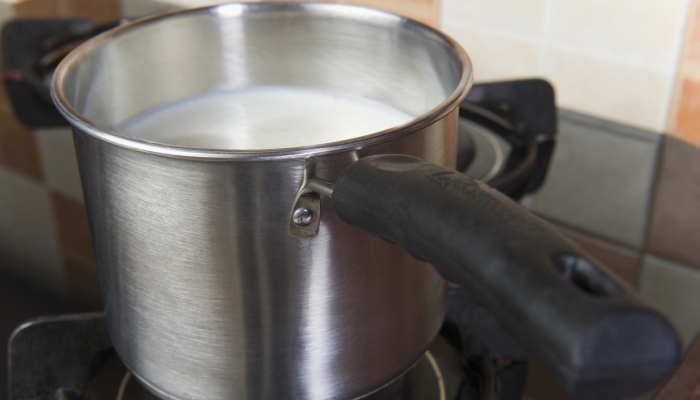
Scalding your expressed breast milk using a stovetop is a relatively simple process. Before you get started, these are the supplies you will need to collect:
- Clean saucepan (I prefer stainless steel)
- Stainless steel bottle
- Instant-read thermometer
- Funnel (I used a stainless steel one)
- A glass or plastic bowl
- Ice and cold water
- Milk storage bags or bottles
Next, follow these step by step instructions on how to scald high lipase breast milk:
- First, prepare an ice bath. Place ice and cool water into a glass or plastic bowl.
- Then pour your freshly pumped breast milk into a clean saucepan.
- Place the saucepan with your milk on the stovetop and heat to 180 degrees Fahrenheit. Heat the milk on medium/low heat, monitoring the temperature closely. Once the milk reaches 180 degrees, you should notice tiny bubbles forming around the edge of the milk, not a rolling boil. Heating the milk past 180 degrees can decrease the nutrients in the milk.
- Transfer the heated milk into your stainless steel bottle using the funnel.
- Place the milk into your prepared ice bath to cool. Make sure no water gets inside the stainless steel bottle.
- Once the milk has cooled, you can then transfer the milk into a breast milk freezer bag or bottle.
- Once the milk has been transferred to your preferred milk storage container, it can be stored in the refrigerator or freezer like normally expressed breast milk. The scalded milk can then be stored the same way freshly pumped milk is stored.
How to Scald Using a Bottle Warmer
Another excellent method for scalding breast milk is done with a bottle warmer. To scald your milk using the bottle warmer method, you will first need to collect some supplies:
- Bottle warmer (a warmer without an automatic shut off)
- Stainless steel bottle
- Instant-read thermometer
- Funnel (I used a stainless steel one)
- A glass or plastic bowl
- Ice and cold water
- Milk storage bags or bottles
To scald breastmilk using a bottle warmer, follow these step by step instructions:
- First, plug in your bottle warmer and turn it on.
- Fill the stainless steel bottle with your freshly expressed breast milk.
- Place the bottle into the bottle warmer.
- Insert the thermometer into the bottle to monitor the temperature as the warmer heats the milk.
- While the bottle warmer is heating the milk, prepare your ice bath by putting some ice and cool water into your plastic or glass bowl.
- Once the thermometer reaches 180 degrees Fahrenheit, remove the bottle of milk from the bottle warmer and place it into your prepared ice bath to cool the milk quickly.
- Once the milk has been cooled, it can be transferred into a milk storage bag or bottle to store until you are ready to use it.
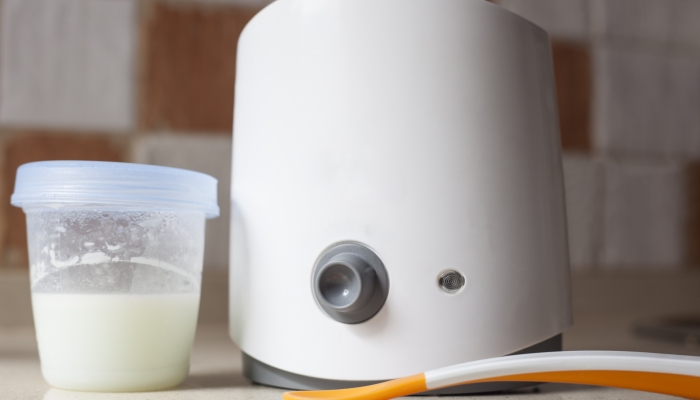
Does Scalding Remove Nutrients From Milk?
Excess lipase in breast milk does not change the nutritional value of your milk, and babies don’t notice a change in taste or smell if drinking directly from the breast or if they drink freshly expressed milk before it is cooled.
Scalding breast milk prevents the lipase from breaking down while it is stored, which causes smell and taste some babies dislike. But you’re probably wondering if the scalding process changes the nutritional value of the milk.
The truth is, scalding breastmilk does remove some of the nutrients and antibodies from your breastmilk but ultimately does not diminish the nutrients enough to cause a problem. As long as your baby’s diet does not consist of only scalded milk, there really isn’t anything to worry about.
How to Store Scalded Breast Milk
Scalded milk can be stored the same way you would store freshly expressed human breast milk. Once the milk has been cooled using your prepared ice bath, it can be transferred into a breast milk storage bag or bottle and kept in the refrigerator or freezer until it is ready to be used.
The CDCs current guidelines for storing freshly expressed human milk are as follows:
| Countertop 77°F or 25°C or colder | Refrigerator 40°F or 4°C or colder | Freezer 0°F or -18°F or colder |
| Up to 4 hours | Up to 4 days | Best within 6 months but ok to use up to 12 months |
What To Do With the Frozen Milk Your Baby Won’t Drink
By the time I had realized I had high lipase milk, I had over 500 oz of frozen breast milk saved in my deep freezer. To say I was devastated is an understatement, but there was no way I was going to waste my precious liquid gold!
If you have high lipase breast milk, here are a few things you can do with your milk to try and get your baby to drink it or how to use it in other ways.
- Mix your thawed milk with fresh milk. Try making your baby a bottle with half-thawed and half fresh milk to disguise the taste and help the milk smell fresh.
- Add alcohol-free vanilla extract. Adding 1–2 drops of alcohol-free vanilla extract to your baby’s bottle can help your baby accept the milk.
- Use the milk for a milk bath. Breast milk has incredible healing properties. Add a few ounces of breastmilk to your baby’s bath to moisturize their skin.
- Add your high-lipase milk to other foods. Use your frozen milk supply to add to baby oatmeal or purees. Other food flavors can hide the taste and smell of the lipase.
- Donate your milk. If your baby refuses everything you have tried, you might consider donating your frozen milk. My baby would not take my high-lipase milk, but I had a friend whose son was about the same age, and he had no problem accepting my milk. If you do not have a friend to donate to, look up milk banks in your area.
FAQs
Does scalding breast milk make it last longer?
Scalding milk does not help to preserve or prolong the ability to store the milk. Scalded milk has the same storage length recommendations as fresh breast milk.
What does scalded milk taste like?
When you scald milk, it removes the lipase from the milk that causes the sour or soapy smell or taste. Scalded milk tastes similar to fresh breast milk.
Is scalded breast milk better than formula?
The debate between breast milk and formula is ongoing. If you are a breastfeeding mother and prefer to feed your baby your breastmilk, scalding your milk before freezing can help you to avoid using formula while away from your baby.
Can you scald breast milk after freezing?
To prevent lipase activity from changing the smell or taste of your milk, it is best to scald the milk before freezing.
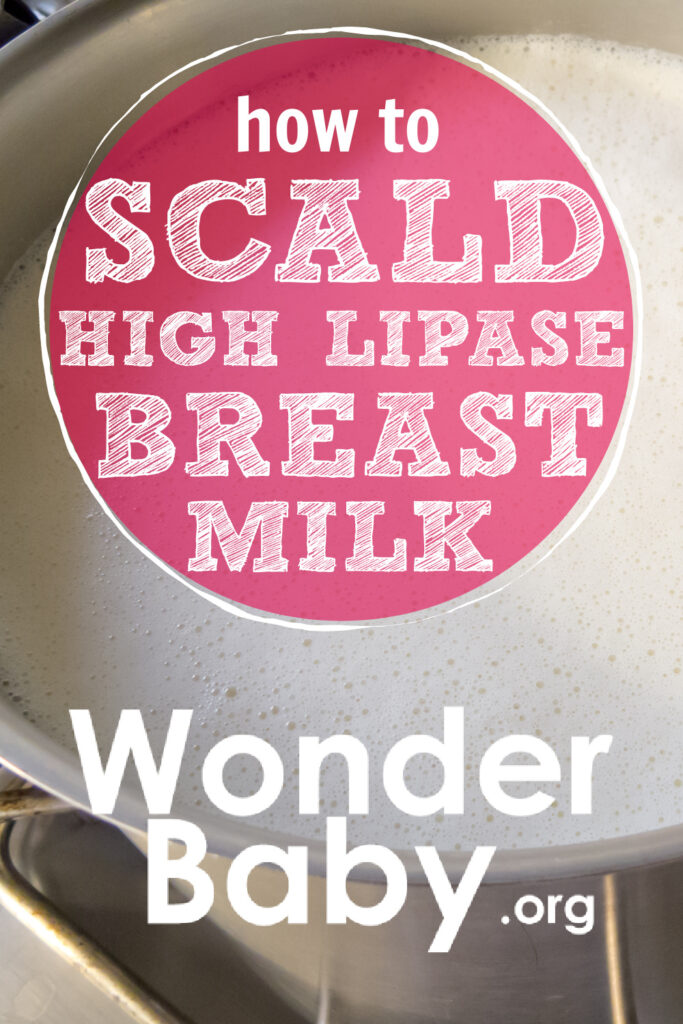
Related Posts

Breastfeeding, Sleep
Sleep and Breastfeeding: A Comprehensive Guide for Nursing Moms
Many people assume breastfeeding and sleep training don’t go together, but it is possible to help your baby sleep better while continuing your breastfeeding journey.
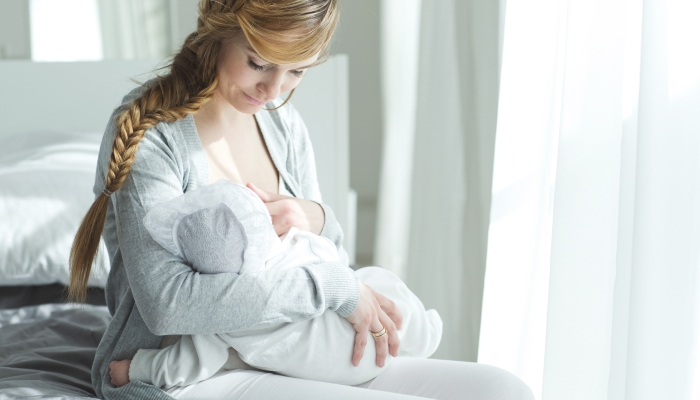
Breastfeeding
Comfort Nursing: Pros, Cons, and How to Stop
Find out what comfort nursing is, when should you worry about it, and how to stop or limit your baby's comfort nursing (especially at night!).

Breastfeeding, Product Reviews
5 Best Breastfeeding Chairs for Nursing Moms of 2023
Whether you want a gentle rock, a smooth glide, or a cozy cuddle to soothe your baby to sleep, you’ll have your pick of the best breastfeeding chairs on the...